Can you put wallpaper on textured walls? While wallpaper is a stylish and effective way to transform a room, textured surfaces can make the process a bit tricky. Standard wallpapers are made for smooth walls, and applying them over bumps or ridges can lead to poor adhesion, bubbling, or tearing. But don’t worry—there are several ways to work around this issue. In this guide, we’ll walk you through what happens when you apply wallpaper directly to textured walls, the best types of wallpaper to use, and how to prep your walls for a flawless finish.
Can You Put Wallpaper on Textured Walls?
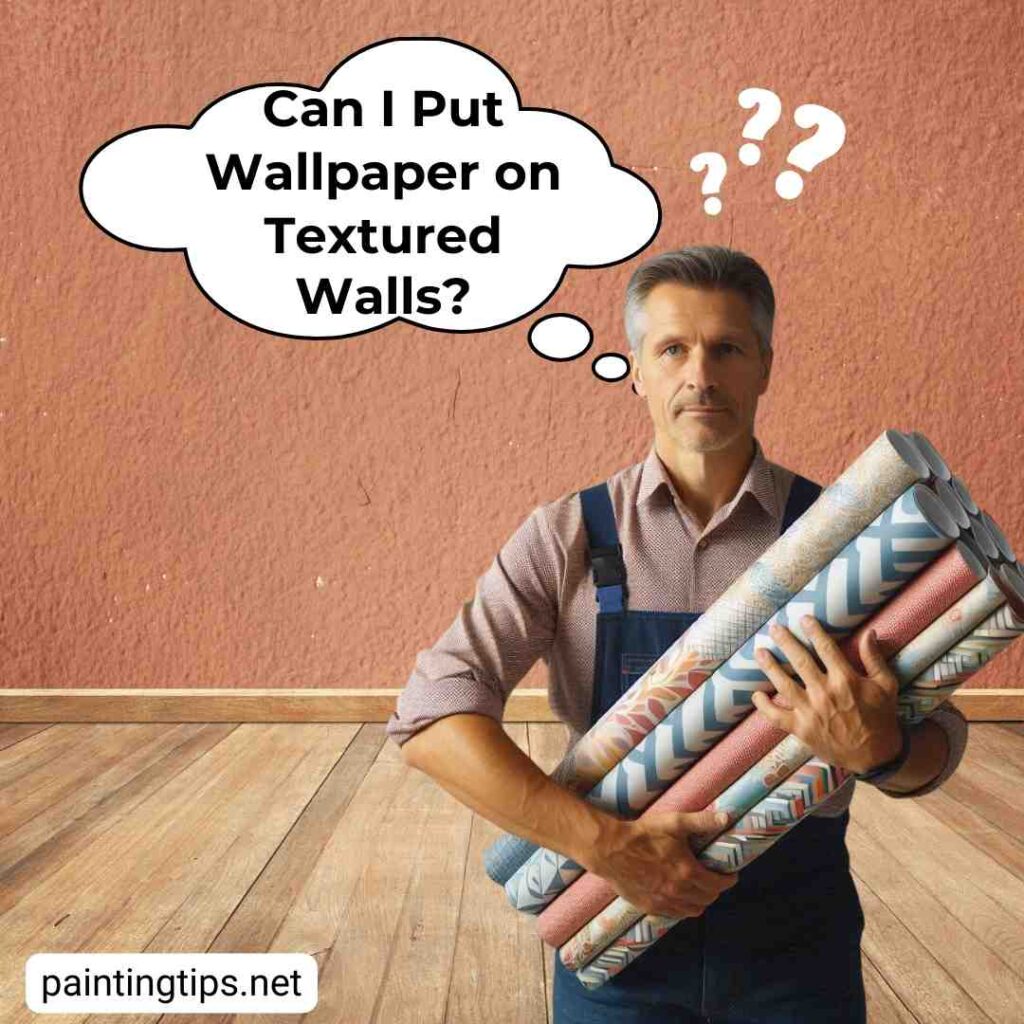
Standard wallpapers are designed for smooth and absorbent surfaces, and wallpaper adhesives are formulated accordingly. But can you apply wallpaper to a textured wall?
Wallpaper is one of the best ways to refresh a wall after painting. However, it can be challenging if you have textured walls. Since wallpaper is typically designed for smooth surfaces, applying it to textured walls can present some difficulties. However, with proper preparation, it is possible to apply wallpaper to textured surfaces. First, let’s discuss the issues you may face if you apply wallpaper directly to a textured wall.
Do You Need to Remove Texture Before Wallpapering?
Most wallpapers are made for smooth surfaces, so if your wall has texture, it’s important to smooth it out as much as possible before hanging wallpaper. This helps the wallpaper adhere properly and prevents bumps or uneven spots.
What Happens if You Put Wallpaper on Textured Walls?
- Applying wallpaper directly to a textured wall can lead to several issues. One common problem is bubbling and blistering, where air pockets form between the wallpaper and the wall, especially in warmer weather.
- Poor adhesion is another challenge, as most wallpaper adhesives are designed for smooth surfaces and struggle to fill in the gaps of a textured wall. This can cause the wallpaper to peel over time.
- Additionally, visible seams can be difficult to align, resulting in an uneven and unappealing finish. Glue overflow is another concern, as smoothing the wallpaper with a cloth or spatula may cause excess glue to seep out.
- Moreover, because wallpaper does not adhere well to textured surfaces, it can shift during application, making it difficult to position correctly. Lastly, the raised bumps on a textured wall can lead to wallpaper tears, especially if you are using thinner wallpaper.
What Kind of Wallpaper Can I Use on a Textured Wall?
For textured walls, thicker wallpapers are generally a better choice. Thin papers can highlight imperfections and tear easily on rough surfaces. However, regardless of the wallpaper type, we recommend smoothing the textured wall as much as possible for better results.
How to Put Wallpaper on Textured Walls?
For the wallpaper to adhere properly and achieve a flawless look, having a smooth surface is essential. Here are some methods to prepare your textured wall for wallpapering: “Related article: Preparing walls for painting after wallpaper removal“
1-Skim Coating & Sanding
One of the most effective ways to smooth a textured wall is by skim coating and sanding. This method involves applying a thin layer of joint compound or plaster to the surface, letting it dry, and then sanding it with 150- or 180-grit sandpaper until smooth. Although this process takes time and requires attention to detail, it delivers the most professional and flawless finish. Make sure to wipe away any dust with a damp cloth before hanging the wallpaper.
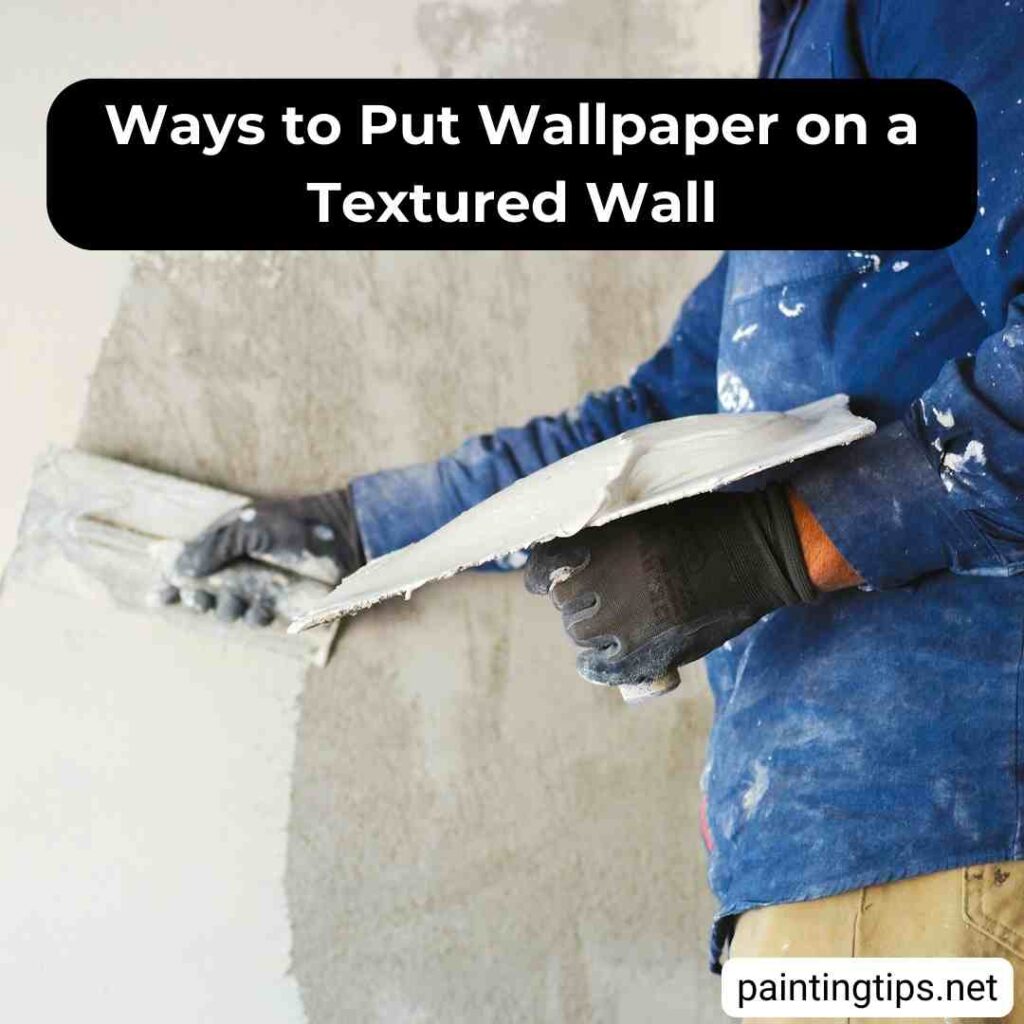
2-Sanding
If the wall has only a mild texture, sanding alone might be enough to create a smooth surface. Begin with coarse sandpaper and gradually switch to finer grits to achieve a more even finish. For larger areas, using a sanding machine can help speed up the process. This method is simple and budget-friendly, but it’s not effective on heavily textured walls.
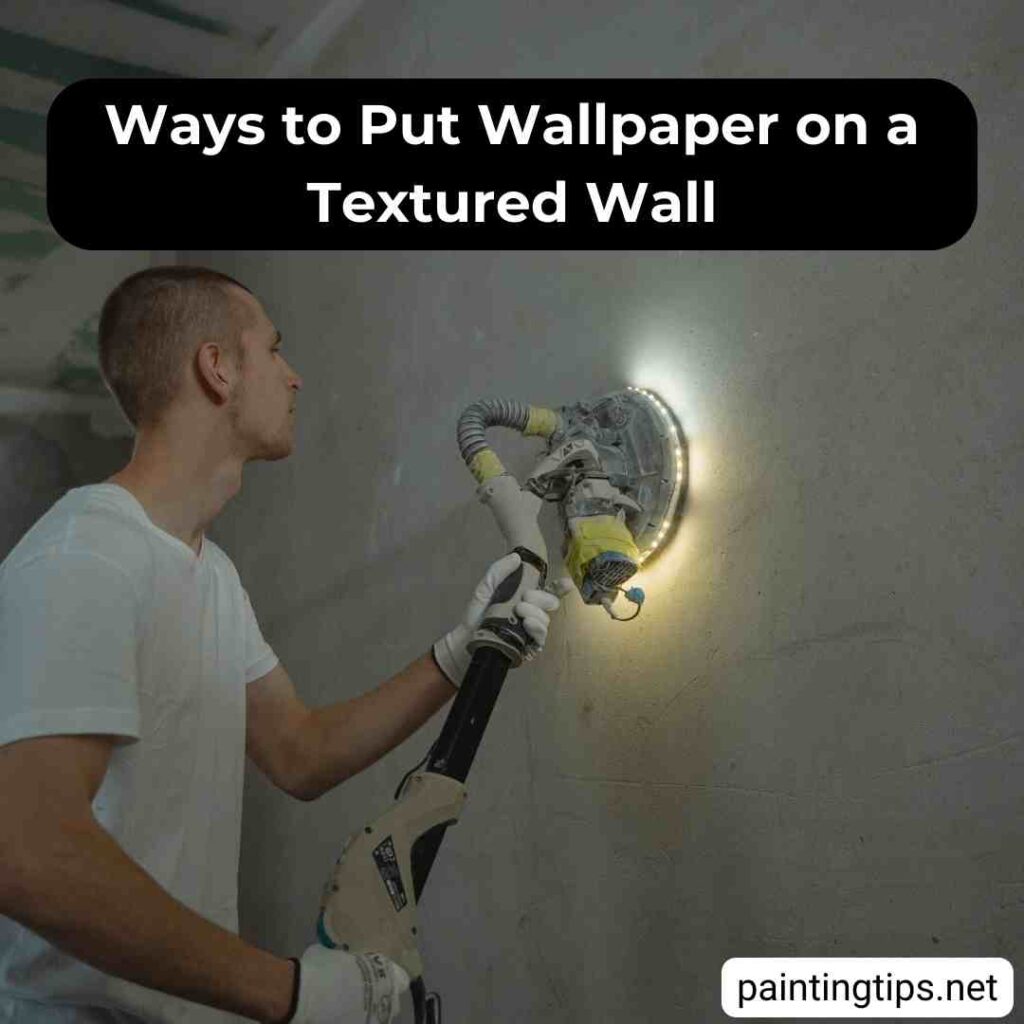
3-Lining Paper
Lining paper offers a quick and easy way to prepare a textured wall for wallpaper. It’s typically applied horizontally to avoid having the seams line up with those of the wallpaper. Once the lining paper is in place, you can apply wallpaper directly over it. While this method may not create a finish as smooth as skim coating, it’s a practical and affordable option—especially for DIY projects.
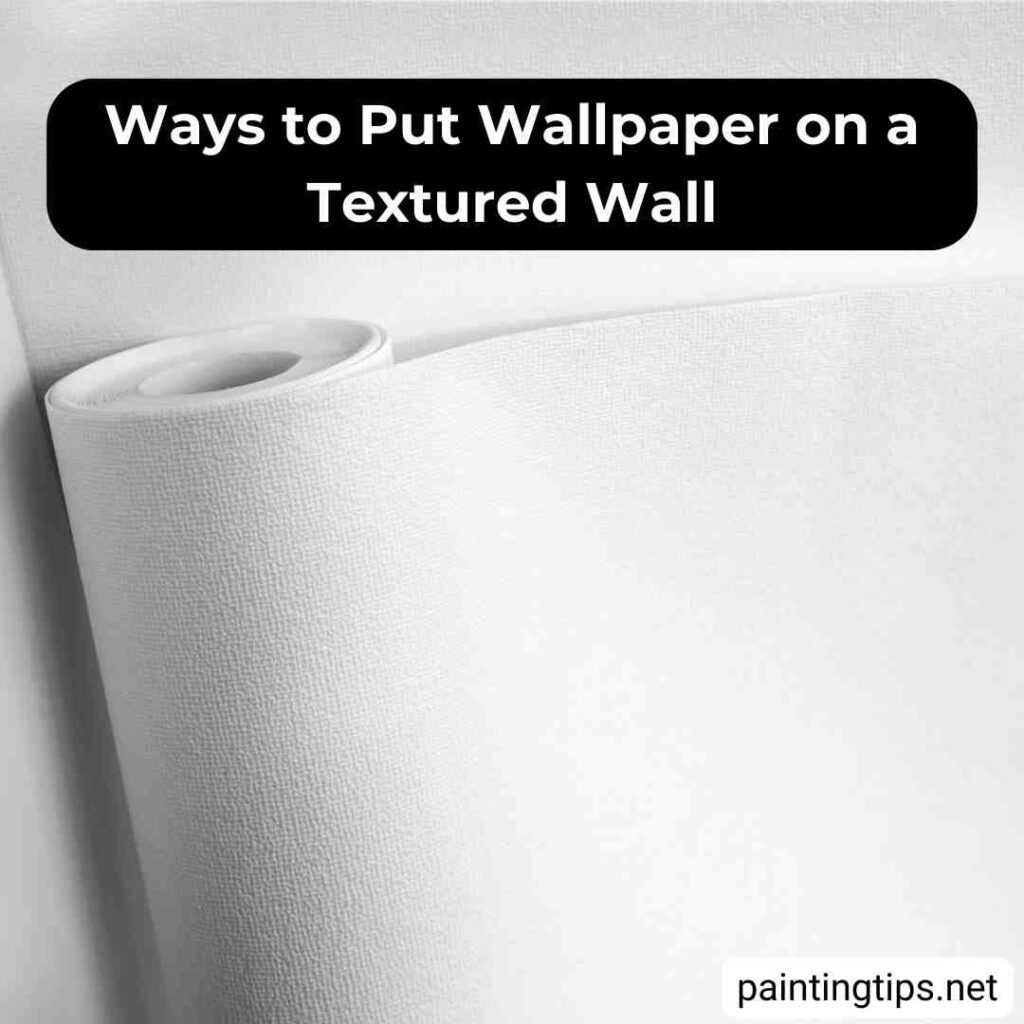
4-Wall Panels
Using wall panels, such as wood or thin plasterboard, is another way to achieve a smooth surface on a textured wall. These panels can be attached directly to the wall, and the seams can be filled in for a seamless look. Once the surface is even, wallpaper can be applied over it. Although this method is more expensive and labor-intensive than others, it provides a permanent and professional-looking result.
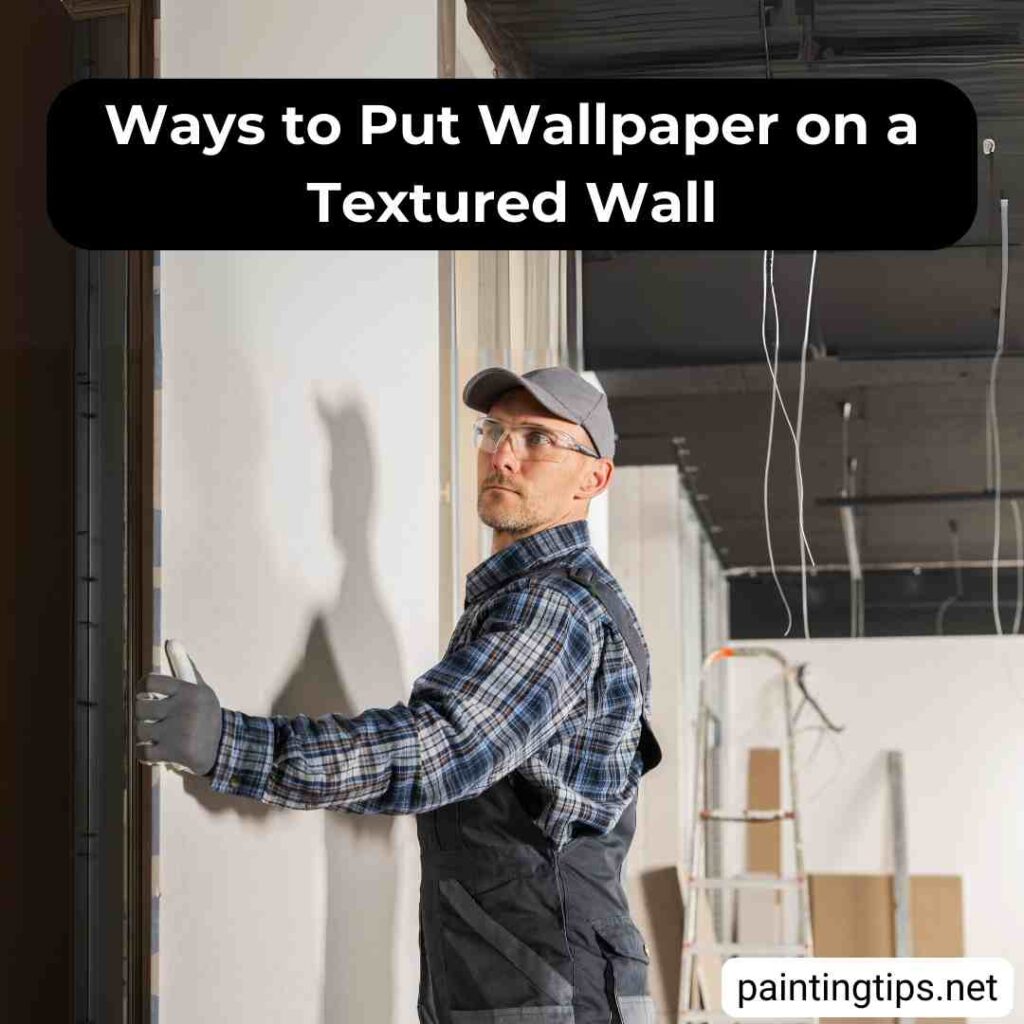
5-Hire a Professional
If you’d rather not tackle the work yourself, hiring a professional plasterer is a reliable option. A skilled expert can ensure your textured walls are smoothed to perfection, providing a flawless finish that’s ready for wallpaper. While this approach is more costly than DIY methods, it delivers the most consistent and professional results.

Can You Put Vinyl Wallpaper on Textured Walls?
Vinyl wallpaper tends to be thinner than standard wallpapers, meaning that the texture of the wall may show through. You can test a small piece of vinyl wallpaper on your textured wall to see how it adheres before committing to the entire project.
Can You Put Removable Wallpaper on Textured walls?
Thicker removable wallpapers can work on textured walls. However, it’s still a good idea to sand the wall beforehand to improve adhesion and ensure a smoother application.
Can You Put Wallpaper on Slightly Textured Walls?
Yes, you can apply wallpaper to slightly textured walls, but thicker wallpaper will provide better results.
Can You Put Wallpaper on a Textured Ceiling?
Applying wallpaper to a textured ceiling is generally not recommended. It can lead to a waste of time and money. Before considering wallpaper for a textured ceiling, the surface needs to be smoothed or covered with a suitable material to ensure proper adhesion and a better finish.